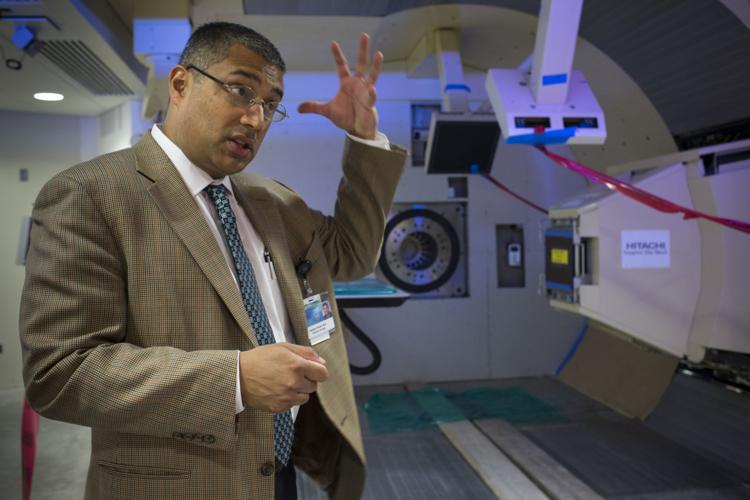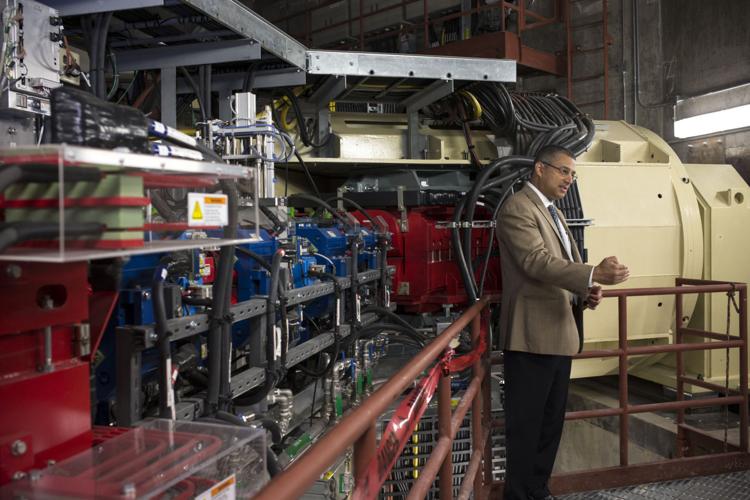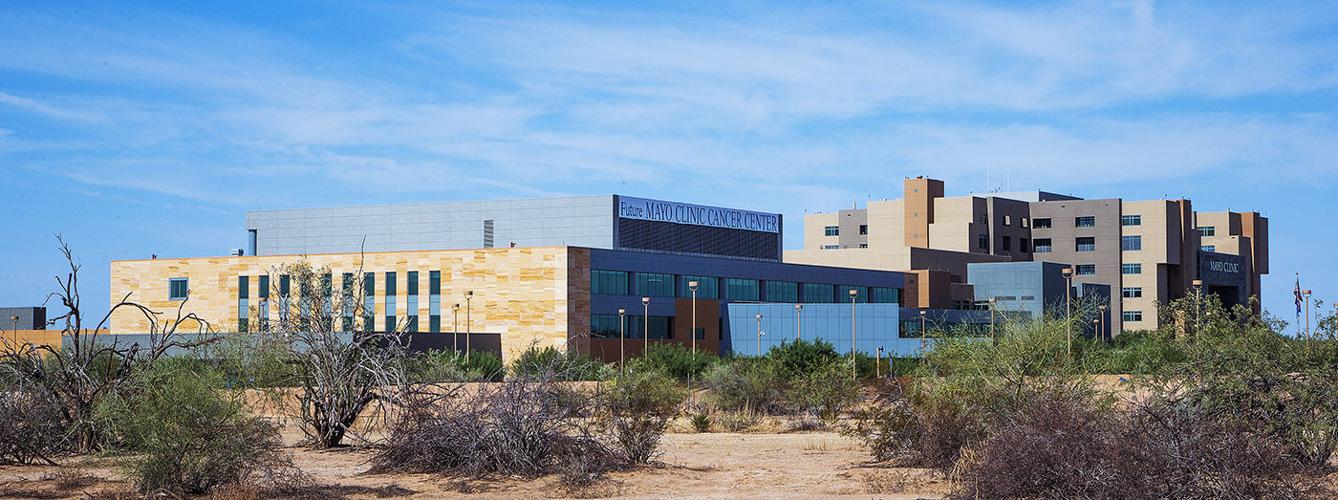A $182 million underground clinic in Phoenix, set to open in March, will house Arizona’s only proton beam therapy program, which aims to minimize damage to surrounding tissue during cancer tumor radiation.
The concrete facility, still under construction and built entirely with private donations, is on the Mayo Clinic’s Phoenix campus. Officials there anticipate 40 percent or more of its patients will come from outside the Phoenix area. Right now, the closest facilities for Arizonans seeking high frequency, targeted proton beam therapy are in California and Texas.
Officials expect to eventually see about 1,200 patients per year.
While some critics have said proton beam therapy is an added expense without added benefits over X-ray radiation, proponents say it can radiate tumors and reduce damage to surrounding normal healthy tissues by as much as 99 percent. They say the therapy can be particularly helpful for pediatric patients with cancerous tumors close to critical organs and body structures.
And Mayo Clinic officials have taken the unusual step toward removing the cost criticism by charging the same for proton therapy as they do for X-ray radiation. The program will accept both Medicare and Medicaid, which in Arizona is called the Arizona Health Care Cost Containment System and is for low-income residents.
Few proton beam programs exist and there is little competition near Phoenix. For example, there are no programs in Nevada, Utah, Colorado or New Mexico. The National Association for Proton Therapy lists 17 facilities in the U.S., plus 10 under construction. The Mayo Clinic’s flagship facility in Rochester, Minnesota, opened a proton beam therapy program in May.
About 15 percent of the Mayo Clinic’s proton beam patients in Phoenix are expected to be children, said Dr. Sameer Keole, a radiation oncologist and director of the Arizona center. Keole also treats children at Phoenix Children’s Hospital and estimates the hospital refers about 10 children per year to proton therapy in other states.
But he believes that number is low because some families who knew there were no programs in Arizona went directly to out-of-state programs such as those in San Diego, Houston and Dallas. Other families can’t afford to go out of state and opt against proton therapy, but might consider it once a local option exists, he said.
“The cure rates for pediatric cancers is very high and has gotten better and better over the decades because of fantastic research that’s been done,” Keole said. “As a result we really have to be very cognizant of the treatment we give kids because we expect to cure a lot of these children and then they have to live with the side effects of the treatment we gave them.”
The Mayo facility is housed 40 feet underground with 7-foot concrete walls and 13 physicists hired specifically for the proton therapy program.
“We have taken all the risk on this,” Keole said. “We have voluntarily said, ‘We are going to completely take the cost argument off the table. It is going to be the same cost for the insurance company and for the patient in terms of his or her co-pay whether they get X-ray therapy or whether they get proton therapy. So anybody who says we are doing it for the money, that completely takes the wind out of the sails.”
He stressed that no public money is at risk, since no government dollars went into the project.
About 95 percent the program’s workload will be cancer tumors — lung, head and neck, prostate, pancreatic, liver, rectal anal canal, certain gynecologic, and brain cancers are all candidates. A small percentage of other conditions such as schwannomas — benign nerve sheath tumors — may be treated with proton therapy, too.
Officials expect some referrals from Tucson. Last week, officials from Tucson Medical Center, Tucson’s largest hospital, toured the facility along with an economic development specialist from Pima County.
TMC recently became part of the Mayo Clinic Care Network, which means local physicians will be able to connect with Mayo Clinic specialists via an electronic consulting technique called eConsults. Officials at TMC say they’ll be able to facilitate patient access to the proton beam therapy.
“While it is important for patients to explore all available treatment options with their physician to determine what approach is best for their unique condition, we are fortunate that patients no longer have to travel out of state to access this remarkable technology, which provides targeted treatment to cancer cells while minimizing damage to healthy tissue,” TMC’s chief medical officer Dr. Rick Anderson said.
Side effects from X-ray radiation vary depending on the treatment site. And not everyone is a candidate for proton therapy.
“We recognize that there are a lot of people providing great care,” Keole said. “We are not saying every patient needs to be treated with protons. But there are a certain percentage of patients where protons would make a lot of sense.”






